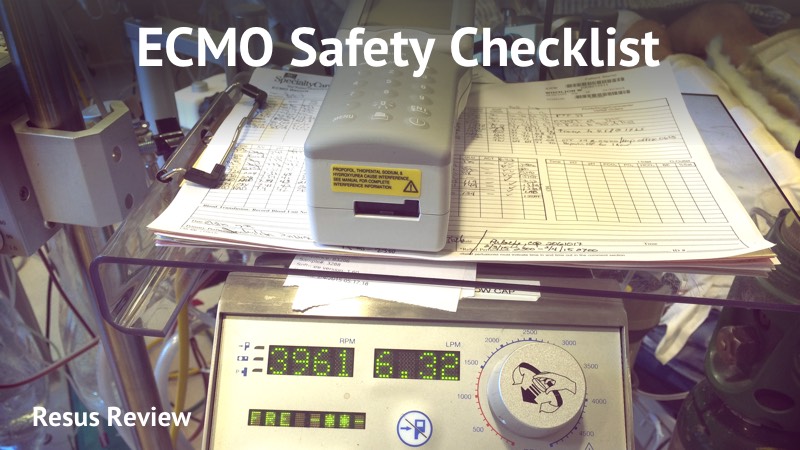
The ECMO checklist is broken into two parts. The first involves communicating the patient’s condition and review of the data. The second phase, is a detailed inspection of the patient and equipment performed at the bedside.
It is useful to have a copy of the safety checklist and paper record as you perform the sign out so that the any findings can be documented immediately. This helps prevent forgetting items that can occur if the documentation is done later. I also recommend that the checklist be performed in a consistent pattern to help avoid missing items and help speed the process because everyone is familiar with the process.
Patient and Data Review
As with any ICU patient sign out, a lot of detailed and technical information needs to be conveyed as efficiently as possible. When the patient is ECMO, there is even more to think about and understand. So in addition, to routine data, special attention to ECMO parameters and data needs special attention.
ECMO Safety Data Review Checklist
- Patient’s condition and problem list.
- Vital signs and trends.
- Current infusions (eg. vasopressors, inotropes, maintenance fluid, tube feedings, sedation, etc).
- Flow settings and pump speed.
- Sweep gas flow rate and fraction delivered oxygen (FDO2).
- Ventilator settings.
- Recent labs. At minimum this should include pre/post oxygenator ABG, hemoglobin, platelets, lactate, bilirubin.
- Pre/post oxygenator pressure.
- Any flow issues.
- Anticoagulation (heparin gtt, bivalirudin, ACT, etc).
- Current type/cross is up to date and emergency blood supply available in blood bank.
Inspection
Once all of the data review checklist has been completed, the patient and equipment should be inspected at the bedside by both the off-going and on-coming person together. Doing this with each other allows for for two sets of eyes to perform the inspection and confirm that all of the checklist items are addressed. It also helps to identify if abnormal findings are new or changing.
Bedside ECMO Safety Inspection Checklist
- Ensure tube clamps are available and at patient bedside. We typically keep four clamps available, and the are hung on the pump cart. A standard location is important, so that that when needed, which is almost always an emergent situation, everyone knows where to grab them.
- Inspect catheter. Observe that it is positioned properly, securing sutures are in place, dressing is in place, and that there are no signs of infection, drainage, or bleeding.
- With flashlight observe entire length of circuit. Look for any cracks in tubing or fibrin clot formation. Identify any areas where leakage may be occurring.
- Observe oxygenator for any clots, fibrin formation, or air accumulation. Ensure that the yellow cap is in place, and that there is no plasma drainage. Check tightness of the blood, heated water, and air connections.
- Look at the ECMO pump for any air or chatter. Listen for any unusual sounds. The pump should be well seated in the cradle. The emergency hand pump should be tested and that the RPM indicator is working.
- The flow sensors should be attached and lubricated.
- Ensure heater is on and connected. Verify the set water temperature. The water tank should be full.
- Correct settings on the blender for the sweep gas flow rate and fraction delivered oxygen (FDO2).
- Verify gas supply. Gas modules connected to proper wall sources. Reserve tank is full, and the valve and wrench are attached.
- Zero the pressure transducer.
- ECMO support cart at bedside and properly stocked.
- Emergency ventilator settings posted.
- If applicable, the CRRT circuit and parameters should be inspected at the same time.
The safety checklist items should be documented either on a paper flow sheet or in the electronic medical record.
This looks really useful – demystifies for those of us who only see ECMO at trade displays. Does your safety inspection progress around the machine in any particular way, anatomically or geographically or input to output? Would love one of your diagrams.